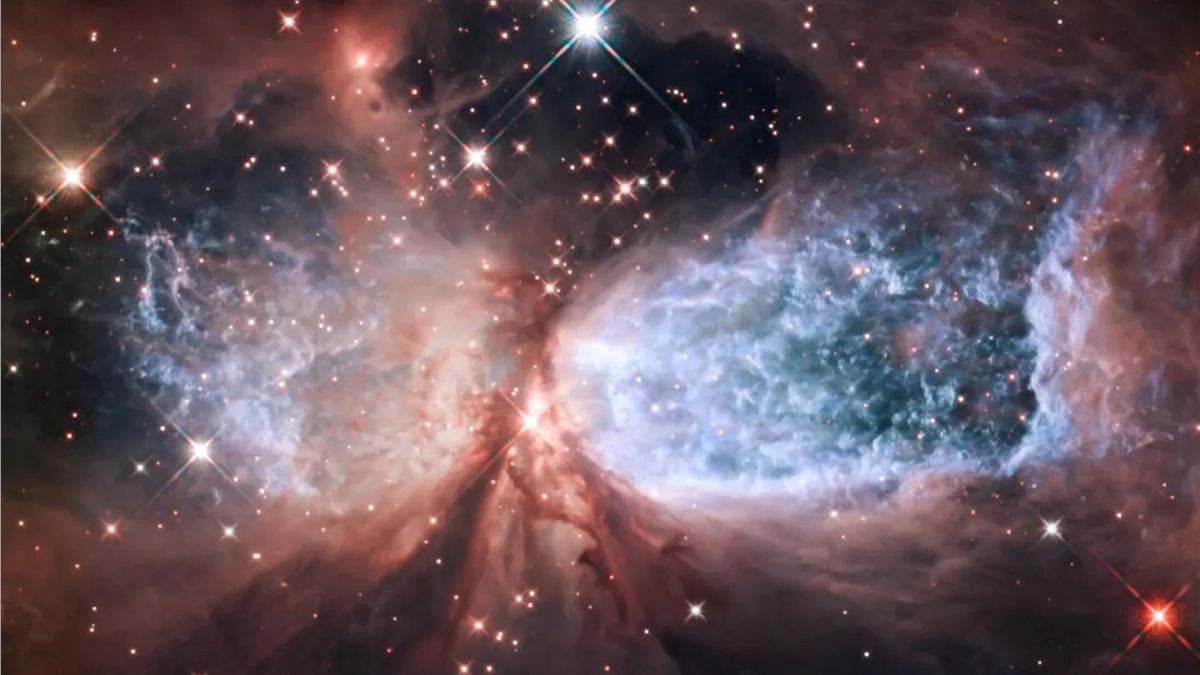What it is: An emission nebula, or star-forming region, named Sharpless 2-106
Where it is: 2,000 light-years away, in the constellation Cygnus
When it was shared: December 2011
Why it’s so special:
This stunning image from the Hubble Space Telescope depicts a star-forming region called Sharpless 2-106, or S106 for short. Characterized by its “wings,” it is classified as a bipolar nebula and affectionately nicknamed the “celestial snow angel.” The star-forming region, which is about 2 light-years wide, is located in a relatively isolated area of the Milky Way.
Although this image appears peaceful, it actually reflects the violent beginnings of stellar evolution. The majestic structure is created by a massive young star named S106 IR, which has a mass 15 times that of the sun.
This star is in the final stages of its formation, ejecting jets of energetic material at high speeds from its poles and disrupting the surrounding gas and dust. Still embedded in its parent cloud, S106 IR expels high-speed material, which gives the cloud a striking appearance. The expelled material also heats the surrounding gas to temperatures of up to 18,000 degrees Fahrenheit (10,000 degrees Celsius) and ionizes hydrogen gas, causing it to glow. This dynamic process creates intricate details that are clearly visible in the image.
Related: Space photo of the week: James Webb telescope spots a secret star factory in the Sombrero Galaxy
The twin lobes of blazing-hot gas on each side of the star (blue in the image) expand from its center, creating the “wings” of the angel. A thick, red lane of dust separates the regions of superhot gas and consists of cooler, dark material that gives S106 a unique hourglass shape. The cooler dust lane is dense enough to conceal the central star from view. However, the star can be seen peeking through the widest part of the dust trail, positioned slightly off-center in the image.
As the star is in the final stages of its formation, it will continue to eject material, thus losing mass. It will eventually calm down and transition into a relatively quieter main sequence star like the sun.
Released in December 2011, this vibrant Hubble image was created by combining visible and near-infrared light collected by the telescope’s Wide Field Camera 3. The light emitted by hot hydrogen gas was observed using visible-light filters, while the cooler gas and dust were captured using near-infrared-light filters.
For more sublime space images, check out our Space Photo of the Week archives.


